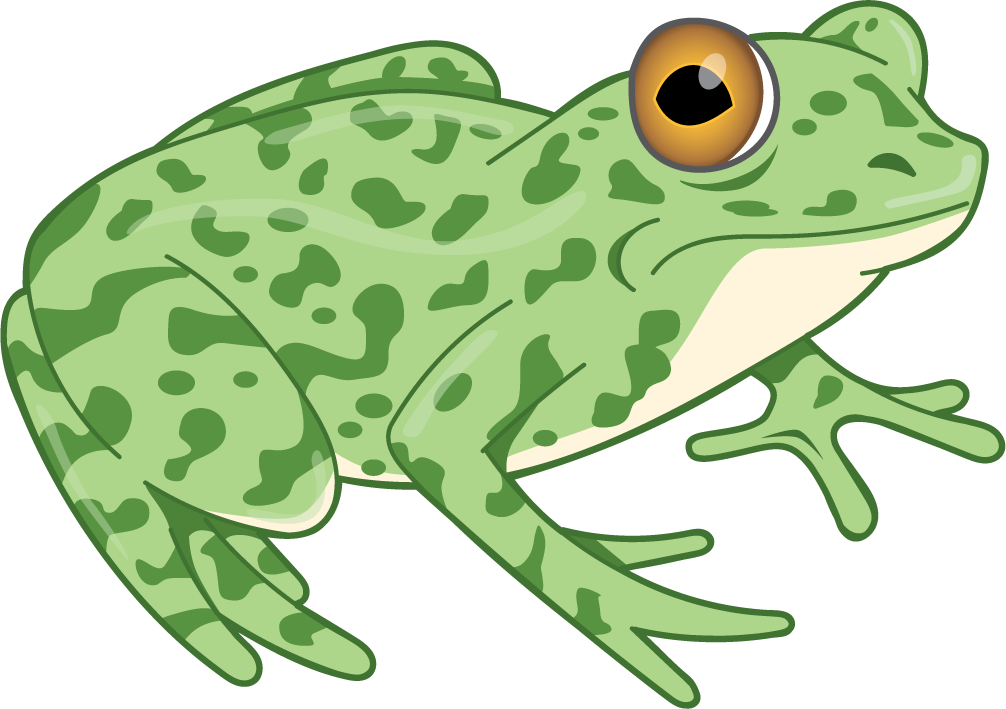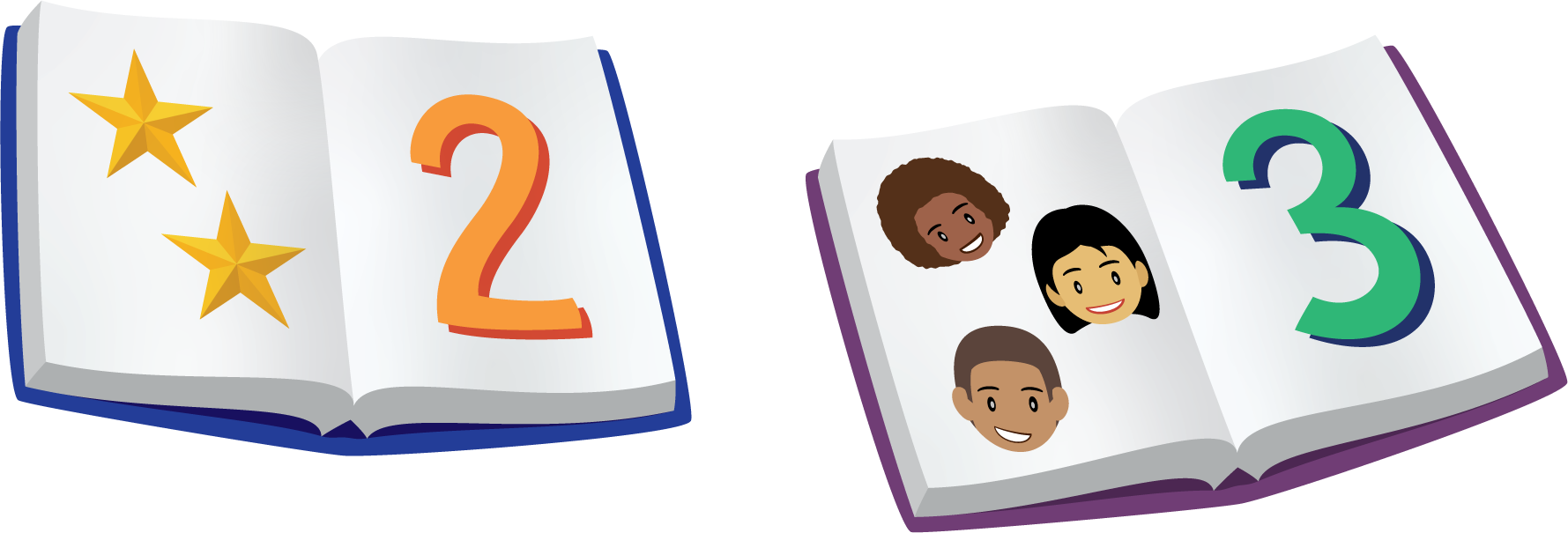Lesson 11
Get Enough
Warm-up: How Many Do You See: In a Flash (10 minutes)
Narrative
The purpose of this How Many Do You See is for students to recognize and name small groups of dots and describe how they see them. This is the first time the images are quickly flashed instead of being displayed for students to look at for as long as necessary. This encourages students to determine the number of dots without counting. From this point on, images in the How Many Do You See routine will be flashed rather than displayed.
Advances: Listening, Representing
Supports accessibility for: Attention, Social-Emotional Functioning
Launch
- Groups of 2
- “This time I am going to show you a group of dots very quickly. Be ready to see how many dots there are.”
- Flash the first image.
- “How many do you see? How do you see them?”
Activity
- Flash the image again.
- “Use your fingers to show your partner how many dots you see.”
- 30 seconds: partner work time
- “Tell your partner how many dots you see and how you see them.”
- 1 minute: partner discussion
- Repeat with the second image.
Student Facing
How many do you see?
How do you see them?


Student Response
For access, consult one of our IM Certified Partners.
Activity Synthesis
- “How could you tell how many dots there were when I flashed the dots so quickly?”
Activity 1: Act It Out: Four Little Speckled Frogs (Part 2) (10 minutes)
Narrative
The purpose of this activity is for students to think of different ways a story can be represented. Students hear the story for the second time. In addition to explaining what the story is about, students also think of ways the class could act out the story. Acting out gives students opportunities to make sense of a context (MP1). Monitor for suggestions of acting out the story with concrete objects such as cubes, fingers, or students, as well as representing the story with pictures. In the activity synthesis, the class acts out the story in one of the ways suggested by the students.
Launch
- Groups of 2
- Display and read the story.
- “What is the story about?”
- 30 seconds: quiet think time
- Share responses
- Read the story again.
- “How can you act out this story?”
- 30 seconds: quiet think time
Activity
- “Discuss your thinking with your partner.”
- 1 minute: partner discussion
- Share responses.
Student Facing

4 little speckled frogs sat on a speckled log,
eating the most delicious bugs. Yum! Yum!
1 jumped into the pool, where it was nice and cool.
Now there are 3 green speckled frogs. Glub! Glub!
Student Response
For access, consult one of our IM Certified Partners.
Activity Synthesis
- Read the story together.
- Act out the story as a class using a previously identified suggestion of using concrete objects or pictures.
Activity 2: Get Enough (10 minutes)
Narrative
The purpose of this activity is for students to get enough pencils for each group of students. Students might get enough pencils for the groups by giving one pencil to each person in the group. Students may also notice that the number of students and pencils are the same when they make a group of pencils with one pencil for every student.
Required Materials
Materials to Gather
Required Preparation
- Each group of 4 needs at least 8 pencils.
Launch
- Groups of 4
- Give each group access to at least 8 pencils.
Activity
- “Work together with your group to get enough pencils so that everyone in your group has one pencil.”
- 2 minutes: small-group work time
- “Put your group of pencils on the table.”
- “How many pencils are in the group you made?”
- “How many people are at your table?”
- “What do you notice?” (There are the same number of pencils and people.)
- “Work with your group to get enough pencils so that each student pictured in your student workbook gets one.”
- 2 minutes: small-group work time
Student Facing

Student Response
For access, consult one of our IM Certified Partners.
Activity Synthesis
- “I need to get enough pencils so that each student has one. What should I do?” (You should give each student a pencil. You should count the students and see how many there are. Then you can get that many pencils.)
Activity 3: Centers: Choice Time (25 minutes)
Narrative
The purpose of this activity is for students to choose from activities that focus on using math tools and recognizing quantities without counting.
Students choose from any stage of previously introduced centers.
- Connecting Cubes
- Pattern Blocks
- Geoblocks
- Picture Books
Required Materials
Materials to Gather
Required Preparation
- Gather materials from:
- Connecting Cubes, Stages 1 and 2
- Pattern Blocks, Stages 1 and 2
- Geoblocks, Stages 1 and 2
- Picture Books, Stages 1 and 2
Launch
- “Today we are going to choose from centers we have already learned.”
- Display the center choices in the student book.
- “Think about what you would like to do first.”
- 30 seconds: quiet think time
Activity
- Invite students to work at the center of their choice.
- 10 minutes: center work time
- “Choose what you would like to work with next.”
- 10 minutes: center work time
- While students work in centers, ask:
- “What did you do with the connecting cubes, pattern blocks, or geoblocks?”
- “What groups of things did you see in your book? How many things are there?”
Student Facing
Choose a center.
Geoblocks

Connecting Cubes

Pattern Blocks

Picture Books

Activity Synthesis
Lesson Synthesis
Lesson Synthesis
Display the image of 5 students from Activity 2.
“If this group of students is working with geoblocks during center time, how many blocks do we need so that each student can have one? How do you know?”
“Now, let’s count to 10.”
Demonstrate counting to 10. Count to 10 as a class 1–2 times.
Cool-down: Unit 1, Section C Checkpoint (0 minutes)
Cool-Down
For access, consult one of our IM Certified Partners.
Student Section Summary
Student Facing
In this section, we figured out if there were enough pencils for everyone in our group.

We matched each pencil with one person.
We also got enough pencils so that each person could have one.